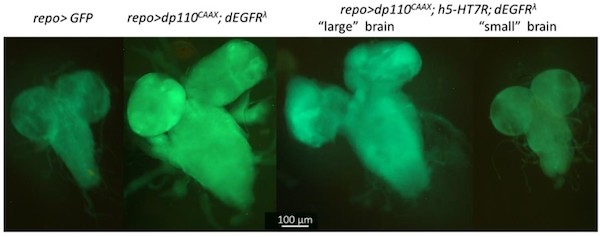Ask for a reprint
email :
* Give your email
2022
ACL
|
F.Courant, M.Maravat, W.Chen, D.Gosset, L.Blot, N.Hervouet-Coste, V.Sarou-Kanian, S.Morisset-Lopez, M.Decoville, 'Expression of the Human Serotonin 5-HT7 Receptor Rescues Phenotype Profile and Restores Dysregulated Biomarkers in a Drosophila melanogaster Glioma Model', Cells 11 1-23 (2022) doi:10.3390/cells11081281
Gliomas are the most common primary brain tumors in adults. Significant progress has been made in recent years in identifying the molecular alterations involved in gliomas. Among them, an amplification/overexpression of the EGFR (Epidermal Growth Factor Receptor) proto-oncogene and its associated signaling pathways have been widely described. However, current treatments remain ineffective for glioblastomas, the most severe forms. Thus, the identification of other pharmacological targets could open new therapeutic avenues. We used a glioma model in Drosophila melanogaster that results from the overexpression of constitutively active forms of EGFR and PI3K specifically in glial cells. We observed hyperproliferation of glial cells that leads to an increase in brain size and lethality at the third instar larval stage. After expression of the human serotonin 5-HT7 receptor in this glioma model, we observed a decrease in larval lethality associated with the presence of surviving adults and a return to a normal morphology of brain for some Drosophila. Those phenotypic changes are accompanied by the normalization of certain metabolic biomarkers measured by High-Resolution Magic Angle Spinning NMR (HR-MAS NMR). The 5-HT7R expression in glioma also restores some epigenetic modifications and characteristic markers of the signaling pathways associated with tumor growth. This study demonstrates the role of the serotonin 5-HT7 receptor as a tumor suppressor gene which is in agreement with transcriptomic analysis obtained on human glioblastomas.
|

|